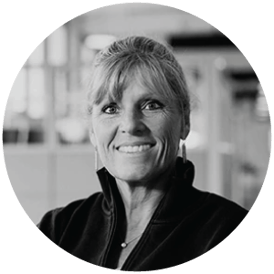In 1985, the percent of computer science bachelor degree recipients that were women was 37%. In 2016, the comparable number is 18%, a year when 57% of all bachelor’s degree recipients were women. These are some of the more striking statistics from the recently published National Center for Women & Information Technology “by the numbers” infographic, underlining the chasm between male and female participation in computer science education.
In addition, recent research published by Stanford University showed that women are invariably made to feel unwelcome before they even apply for tech jobs.
Codio is a strong advocate for diversity and equity of access to computer science education. Throughout our work in higher education and K12 it’s impossible not to notice the sharp drop off in female participation in computer science once the subject moves from being a mandatory component of the curriculum to being an elective.
To get closer to the underlying issues, Codio recently spent time with Gwen Britton, Senior Executive Director for STEM Education at Southern New Hampshire University (SNHU). Gwen is a strong advocate, positive change agent and leader in the women in tech movement.

How do you characterize the landscape of issues surrounding the women in tech movement?
“It’s a broad landscape from the level of women participating in key education fields such as cyber or computer science, but it’s also about seeking recognition and upward mobility for women, ensuring that they’re not the only one at the table, or the only female in the room. Trying to grow the number of participants.”
“When we look across a variety of subjects, there are more women in environmental science than men, why? With Mathematics, it’s a fairly even 55/45, similar with data analytics, but when we look at CS and IT, it’s more like 15/85, 20/80 female/male.”
“You then look at the elementary schools and find that youngsters are behaving in a way that guides their development, the proverbial pink aisle in the store for example, and in the schools there are simply not enough trained teachers. There is an urgent need for investment in teacher training and professional development to assist with up-scaling and re-training teachers.”
Why does there seem to be so much drop out when the subject becomes an elective option in middle school or high school?
“There’s very little that mandates teaching of the subject in middle and high school years, and unless the school has a teacher able to teach the subject, it will not take off. So there’s a challenge to ignite that spark of interest which is difficult if pupils have never been exposed to the subject, and there’s no previous peer group cohort to act as role models.”
So how do you attract female participation?
“Role models are critical but perhaps more important is the way the subject presents itself to new learners, and how attractive CS makes itself to its audience.”
“Sometimes when you ask kids about coding and CS they look at you like you have 6 heads - contrast that with a workshop I experienced exploring students’ passions and purpose for study, e.g. the subject of clean drinking water and how could I make a positive change in the world by tackling this problem? I could do law, policy, environmental science - but who would think that computer science could have an impact on clean water? So, if we explore the ways in which education can make an impact and relate that to the purpose, we’re much more likely to elicit interest in the subject.”
“At times it feels as if we’re still rather robotically saying “you will do algebra, you will do science… and it lacks context for the student.” It’s also the case that we have done a poor job of outlining all the options and pathways that exist for students.”
Has the CS community done a poor job of marketing the subject to students?
“Yes, there are better ways we all need to present the subject. If you presented 5 wicked problems and challenged people to think differently - you can empower people and this could drive engagement positively.”
“It’s all about helping students find a purpose and a passion for the subject.”
What initiatives would you highlight as having the potential to make a difference?
“Well the first one is my experience of volunteering to be a judge at a robotics competition. What was cool about it was the camaraderie - there were two female teams and one with a male participant, and when I asked them about being a female team, they said they welcomed anyone with a passion - and these were girls aged 12 to 13, who were very sophisticated. There are parallels with that degree of inclusion in the workplace. The girls didn’t feel stupid and no one had told them it wasn’t appropriate for them.”
“A second example is my experience of taking a group of female students to a Women in Technology event in Chicago - at first, some participants were nervous, a little tentative about joining with others from very big name institutions but by the end of the first day their confidence level was high - similar to the girls at the robotics competition. They felt they belonged and that they could contribute.”
“Often, women just need a confidence booster. They didn’t need help per se, they were smart, able, they just needed to feel confident and when that happens it’s an amazing transformation.”
Should there be some form of positive discrimination to boost female participation?
“I don’t think there should be positive discrimination in the sense of artificially skewing admissions or using quotas, but one of the things we have looked at is a diversity and inclusion audit. SNHU has an awesome diversity officer and the exercise really shifted us off our game and made us look differently at the problem. Too often, we see only what is above the water line but not beneath - there could be issues of cultural identity, religious belief, gender identity - so taking those themes, you can then go and look at the first introductory page for a computer science course, and if you see a picture representing the people that do coding, for example three white men, then maybe you feel “I don’t see myself there, I don’t see any females”. That alone could be the problem.”
“Too often cultural bias becomes the accepted norm.”
How is SNHU now addressing these issues?
“Well, first, we’re looking at our foundational courses and asking the question: is the door open for female participation? Can people relate to the way we present the subject, ensuring we’re not putting people off without realizing it? We plan to make some changes to our computer science and IT courses.”
“The second thing is to create more opportunities for students to work together - for example capture the flag challenges, the cyber security conference, fielding female teams - essentially spreading the word, being inclusive, and inviting more people to participate.”
“Collaboration can be powerful in breaking down barriers to participation. Recently we gathered students from a number of major disciplines to solve a challenging local problem: the refugee crisis in Manchester, and how to help build better community communication. We had fantastic participation and the students all stayed online all day to solve the problem - that’s the kind of thing we’re doing at SNHU.”
What more can be done? In terms of policy or funding?
“It has to be more than just funding - often funds come in, and then disappear and the initiative fails. It has to be a movement. One example is the Pi Academy which gathers people together to learn, put together projects, and pay it forward. These initiatives can scale and have impact.”
What about the role of industry?
“Industry knows what they need and what they can’t easily obtain. The skills gaps are enormous - and unless industry works with education institutions in a more concerted way, we’ll be 20 paces behind. But more broadly, industry should be actively encouraging women and using role models to attract specific candidate groups. Again, it’s often about how the subject is presented or explaining more clearly how people are using their skills. Think ‘developer” versus data scientist solving clean water problems - both need similar skills but they speak to different audiences.”
Who are your own personal role models?
“As for my own personal influences - one is my grandmother, and one is my father.”
“My grandmother is a hero; with parents who believed in education, she left the family farm and went to university and met her husband, a chemical engineer. In difficult circumstances after her husband passed, she found a way to have her children cared for and went back to education to earn her MSc in Mathematics to build a career and provide for her children. She was a feisty lady.”
“And growing up my father didn’t treat us any differently. I was on the baseball team and went to college. He removed obstacles to me progressing.”
“I would never necessarily have thought about being a software engineer but I got a job at a place where they programmed animatronic robots. I was lucky to have exposure in this way - it’s a lot different seeing things in context to written words. I discovered I liked writing code - it ignited my passion and I was able to combine my creative side as an artist with a passion for science and engineering.”

